- Home
- Mario Puzo
The Godfather
The Godfather Read online
Table of Contents
Title Page
Copyright Page
Introduction
Dedication
BOOK I
Chapter 1
Chapter 2
Chapter 3
Chapter 4
Chapter 5
Chapter 6
Chapter 7
Chapter 8
Chapter 9
Chapter 10
Chapter 11
BOOK II
Chapter 12
Chapter 13
BOOK III
Chapter 14
BOOK IV
Chapter 15
Chapter 16
Chapter 17
Chapter 18
Chapter 19
BOOK V
Chapter 20
Chapter 21
Chapter 22
BOOK VI
Chapter 23
Chapter 24
BOOK VII
Chapter 25
Chapter 26
Chapter 27
Chapter 28
BOOK VIII
Chapter 29
Chapter 30
Chapter 31
BOOK IX
Chapter 32
Afterword
NEW AMERICAN LIBRARY
ESSENTIAL EDITIONS
THE GODFATHER
The son of Italian immigrants who moved to the Hell’s Kitchen area of New York City, MARIO PUZO was born on October 15, 1920. After World War II, during which he served as a U.S. Army corporal, he attended City College of New York on the G.I. Bill and worked as a freelance writer. During this period he wrote his first two novels, The Dark Arena (1955) and The Fortunate Pilgrim (1965).
When his books made little money despite being critically acclaimed, he vowed to write a bestseller. The Godfather (1969) was an enormous success. He collaborated with director Francis Ford Coppola on the screenplays for all three Godfather movies and won Academy Awards for both The Godfather (1972) and The Godfather, Part II (1974). He also collaborated on the scripts for such films as Superman (1978), Superman II (1981), and The Cotton Club (1984).
He continued to write phenomenally successful novels, including Fools Die (1978), The Sicilian (1984), The Fourth K (1991), and The Last Don (1996).
Mario Puzo died on July 2, 1999. His final novel, Omerta, was published in 2000.
ROBERTJ. THOMPSON is the founding director of the Center for Study of Popular Television at Syracuse University, where he is also the Trustee Professor of Media and Popular Culture at the S. I. Newhouse School of Public Communications. A past president of the national Popular Culture Association, he lectures across the country on the subjects of television and popular culture.
Hundreds of radio and TV programs and publications have featured Professor Thompson’s commentary, and Thompson is the author or editor of five books: Television’s Second Golden Age (Continuum, 1996), Prime Time, Prime Movers (Little, Brown, 1992), Adventures on Prime Time (Praeger, 1990), Making Television (Praeger, 1990), and Television Studies (Praeger, 1989). He is currently working on a history of television.
PETER BART has been editor in chief of Variety since 1989.
He spent ten years as a staff reporter for The Wall Street Journal and The New York Times before entering the motion picture industry. He joined Paramount Pictures in 1967. There he played a key role in developing and supervising such influential films as The Godfather, Paper Moon, Harold and Maude, True Grit, and Rosemary’s Baby. In 1977 he became president of Lorimar Films, where he fostered Being There and The Postman Always Rings Twice. He has also published five books. Who Killed Hollywood? is his most recent title.
Bart was educated at Swarthmore College and the London School of Economics. He resides in Los Angeles with his wife, Leslie Bart.
New American Library
Published by New American Library, a division of
Penguin Group (USA) Inc., 375 Hudson Street, New York, New York 10014, USA
Penguin Group (Canada), 90 Eglinton Avenue East, Suite 700, Toronto,
Ontario M4P 2Y3, Canada (a division of Pearson Penguin Canada Inc.)
Penguin Books Ltd., 80 Strand, London WC2R 0RL, England
Penguin Ireland, 25 St. Stephen’s Green, Dublin 2, Ireland (a division of Penguin Books Ltd.)
Penguin Group (Australia), 250 Camberwell Road, Camberwell, Victoria 3124,
Australia (a division of Pearson Australia Group Pty. Ltd.)
Penguin Books India Pvt. Ltd., 11 Community Centre, Panchsheel Park, New Delhi - 110 017, India
Penguin Group (NZ), cnr Airborne and Rosedale Roads, Albany, Auckland 1310,
New Zealand (a division of Pearson New Zealand Ltd.)
Penguin Books (South Africa) (Pty.) Ltd., 24 Sturdee Avenue, Rosebank, Johannesburg 2196, South Africa
Penguin Books Ltd., Registered Offices: 80 Strand, London WC2R 0RL, England
First New American Library Printing, March 2002
First New American Library Essential Editions Printing, October 2005
Copyright © Mario Puzo, 1969
Introduction copyright © Robert J. Thompson, 2002
Afterword copyright © Peter Bart, 2002
All rights reserved.
NEW AMERICAN LIBRARY and logo are trademarks of Penguin Group (USA) Inc.
eISBN: 9781101226704
The Library of Congress has cataloged the original New American Library
trade paperback edition of this title as follows:
Puzo, Mario, 1920-99
The Godfather / by Mario Puzo; with an introduction by Robert J. Thompson; an afterword
by Peter Bart.
p. cm.
eISBN : 978-1-101-04311-0
1. Corleone family (Fictitious characters)—Fiction. 2. Italian Americans—Fiction.
3. Organized crime—Fiction. 4. New York (NY)—Fiction. 5. Criminals—Fiction.
6. Mafia—Fiction. I. Title.
PS3566.U9 G6 2002
13’.54—dc21 2001056214
Set in Fairfield Light
Without limiting the rights under copyright reserved above, no part of this publication may be reproduced, stored in or introduced into a retrieval system, or transmitted, in any form, or by any means (electronic, mechanical, photocopying, recording, or otherwise), without the prior written permission of both the copyright owner and the above publisher of this book.
PUBLISHER’S NOTE
This is a work of fiction. Names, characters, places, and incidents either are the product of the author’s imagination or are used fictitiously, and any resemblance to actual persons, living or dead, business establishments, events, or locales is entirely coincidental.The publisher does not have any control over and does not assume any responsibility for author or third-party Web sites or their content.
The scanning, uploading, and distribution of this book via the Internet or via any other means without the permission of the publisher is illegal and punishable by law. Please purchase only authorized electronic editions, and do not participate in or encourage electronic piracy of copyrighted materials. Your support of the author’s rights is appreciated.
http://us.penguingroup.com
Introduction
by Robert J. Thompson
AT THE END of the 1960s, the Western was still the dominant American epic. The myth of the birth of a nation, settlers plowing from sea to shining sea behind the engine of manifest destiny, had captured our national imagination for a century. From the opening of the frontier after the Civil War, through the brief but golden age of the cowboy, to the Wild West shows of Buffalo Bill, the myth of the West was being created as it was being lived. Then, just as the frontier was closing, Hollywood was repackaging the age of Western expansion for consumption by citizens of a new centur
y. The Great Train Robbery, one of the first movie narratives, was a Western. If the Greeks had the Iliad and the Odyssey; if the Romans had the Aeneid; if the Jews had the Hebrew scriptures, the United States had Wyatt Earp and John Wayne.
All of that has changed. The Western has been replaced by the mob story as the central epic of America. By exchanging the geographical frontier for the urban frontier and by embodying themes of the great immigrant narratives, the mobster, it might be argued, has taken the place of the Western hero in the American heart. The Sopranos currently reigns as one of the most critically acclaimed television series in the history of the medium, and a handful of mob movies remain among the most celebrated films in all of American cinema. It took a product of enormous cultural power to effect this change. In this case it was a novel which, in its resonance and influence, rivals other popular novels, such as Uncle Tom’s Cabin and Gone With the Wind. The provenance of the new American myth can be traced to the publication of The Godfather.
The story you are holding was first published in 1969, which was, as you may know, a very interesting year. U.S. bombing raids in Vietnam reached their highest level yet, but the war was going poorly. Doubts about the moral legitimacy of that war were exacerbated by late-year reports that 450 villagers had been massacred in 1968 by an American infantry unit in My Lai, but Vice President Spiro Agnew was calling protesters of the war an “effete corps of impudent snobs.” The Woodstock Festival celebrated peace and love, while at Altamont Raceway the Rolling Stones concert ended in murder and mayhem. A police raid of New York City’s Stonewall Bar launched a new era of gay rights activism; U.S. senator Edward Kennedy fled the scene of a fatal car accident; and two men set foot on the moon. In short, The Godfather arrived in American bookstores during an exciting cultural revolution and in the middle of a big, fat national mess.
The whole myth of America was up for grabs. Old-fashioned Westerns like Gunsmoke and Bonanza were still among the five highest-rated shows on network television, but the countercultural Rowan & Martin’s Laugh-In was number one. The Western, in fact, was looking pretty long in the tooth. New cultural, social, and political movements were questioning the interpretations of American history, so many of which were embodied in the Western genre. The civil rights movement introduced the idea that manifest destiny was a holocaust inflicted by European settlers on Native Americans. The women’s movement made the macho ethic of the West seem grossly archaic. The war in Vietnam challenged the validity of the militaristic methods by which the West was won. American leaders like President Nixon were being openly challenged, and lawmen, like the Chicago police at the 1968 Democratic Convention, were no longer always considered the good guys.
Four popular movies of 1969 revealed the degree to which the great American narrative was being contested. Butch Cassidy and the Sundance Kid, the biggest hit of the year, celebrated a pair of charming Western outlaws. Sam Peckinpah’s artsy The Wild Bunch also featured outlaws in a story, set in 1913, that essentially pronounced dead the myth of the West. Midnight Cowboy, which won the Oscar for best picture that year and was third in box office receipts, appropriated the name and the hat of the cowboy in an X-rated film set in New York City about a male prostitute. And the protagonists in Easy Rider were a couple of counterculture cowboys who rode hogs instead of horses and did drugs instead of driving dogies. Even True Grit, a more traditional Western, featured John Wayne as an over-the-hill marshal. The Western form was still very much alive in 1969, but it was being transformed almost beyond recognition.
It was into this contested cultural environment that The Godfather introduced another myth.
THOSE FILMS OF 1969 reflected a shift in the role of the hero in American popular culture. The events of the late 1960s challenged the unambiguous nature of good and bad. Besides the authority of the military, the police, and the established order of race and gender roles, even parental authority was quivering in the face of more casual sexual mores and the power of rock ’n’ roll. To many citizens, things seemed out of control. Popular culture had retained a grip on its respect for authority for years, ignoring the cold war and civil rights in most of its entertainment, but that grip was loosening. America seemed ready for a new type of protagonist, one who embodied the ambiguities of the times.
The Godfather provided not only a new set of protagonists but also a whole new code of living. Like Butch and Sundance, they were on the other side of the law. As the effectiveness of the traditional models of authority were proving vulnerable in the public eye, the Corleone family offered up a different model. Based on an unbreakable code, a solid sense of family, and an ability to bypass bureaucratic loopholes and inefficiencies, the Mafia of The Godfather presented a seductive alternative world. These people could get things done, and while some of those things were horrible, most of their victims deserved what they got and were usually outlaws themselves.
The mob story as Mario Puzo envisioned it provided some terribly satisfying elements lodged deep in the American heart. It included a rags-to-riches immigrant story and tales of social and neighborhood benevolence, but it linked these with narratives of revenge, vigilante justice, and machismo. Part of the thrill of the book was the intimate look it afforded us into a dark and violent demimonde, a delicious taste of a dangerous lifestyle that most readers would, it would be hoped, never encounter up close. But more important, it provided a strikingly tempting alternative to the official and legal authorities of the day.
As the Western pioneers carved a system of justice out of the wilderness, the Corleones create one within the chaos and corruption of the city. Though the glory of the American experiment is its laws, courts, checks and balances, and deterrents to abuses of power, these things often don’t make for satisfying storytelling. In the world of The Godfather, no guilty person ever got off on a technicality.
Take the case of Amerigo Bonasera. His first name, which evokes the Italian explorer for whom our nation is named, is the first word of the novel. Amerigo is an American, working hard and doing his best, playing by the rules of his new nation. His good citizenship has brought him to grief at the opening of the book, however. Two young men who have viciously attacked his daughter have been released on a suspended sentence by a New York judge. While his daughter lies in a hospital, her assailants are back on the street. As a last resort, he comes for help to Don Corleone, who reprimands him for bothering with the courts in the first place:
“Why do you fear to give your first allegiance to me? . . . You go to the law courts and wait for months. You spend money on lawyers who know full well you are to be made a fool of. You accept judgment from a judge who sells himself like the worst whore in the streets. . . . If you had come to me for justice those scum who ruined your daughter would be weeping bitter tears this day. If by some misfortune an honest man like yourself made enemies they would become my enemies . . . and then, believe me, they would fear you.”
(p. 28)
The Don and his associates see themselves as more than an excessively proactive neighborhood watch group, however. There is in what they do an appealing, if ultimately unworkable, political philosophy. When discussing the inevitable “war” between the Tattaglia and the Corleone families, one associate theorizes:
“These things have to happen every ten years or so. It gets rid of the bad blood. And then if we let them push us around on the little things they wanta take over everything. You gotta stop them at the beginning. Like they shoulda stopped Hitler at Munich, they should never let him get away with that, they were just asking for big trouble when they let him get away with that” (p. 134)
Michael Corleone, Don Vito’s son, recalls his own father making a similar observation back in 1939: “If the Families had been running the State Department,” Michael muses to himself, “there would never have been World War II” (p. 134).
THE GODFATHER is an American story, Horatio Alger for big boys. Caught up in a feud that leaves his father dead, twelve-year-old Vito Andolini, like so many
immigrants before and after him, finds the old country no longer hospitable. He is sent to New York with little more than the name of his village, with which he is baptized into his new identity as an American, Vito Corleone. He secures work in a grocery store, marries a Sicilian woman as fresh from the boat as he is, and starts a family. When a notorious neighborhood extortionist causes him to lose his job, Vito supports his wife and two children by joining a gang that specializes in hijacking trucks filled with silk dresses. When the same extortionist demands a piece of the hijacking action, Vito kills him with ruthless, premeditated efficiency.
His reputation in the neighborhood established, Vito becomes an urban Lone Ranger. Rather than take over the extortionist’s rackets, Vito chooses as his first act as “a man of respect” to save a widow and her dog from the nefarious greed of an evil landlord. About to be evicted from her apartment, Signora Columbo, as a poor woman, has no recourse to the usual channels of authority. It will, in fact, be the police who will put her out of the building if she doesn’t leave voluntarily. She comes to Vito’s house to ask for help and he arranges it: same rent as before and the yapping dog stays.

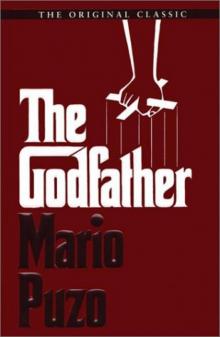 The Godfather
The Godfather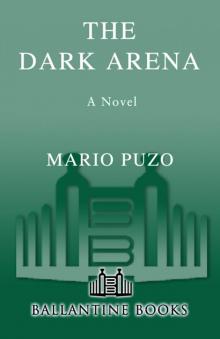 The Dark Arena
The Dark Arena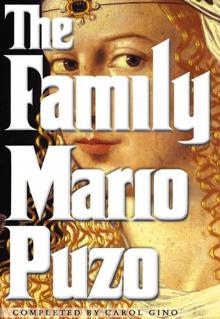 The Family
The Family Last Don
Last Don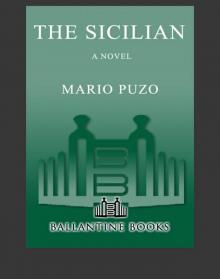 The Sicilian
The Sicilian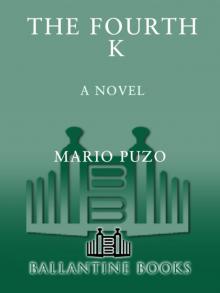 The Fourth K
The Fourth K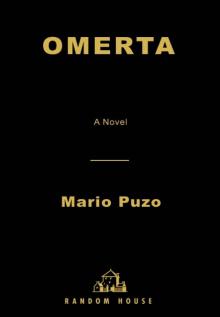 Omerta
Omerta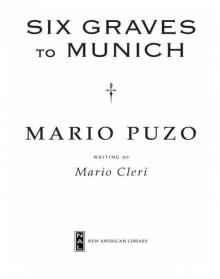 Six Graves to Munich
Six Graves to Munich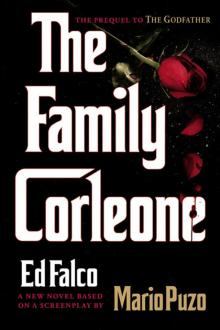 The Family Corleone
The Family Corleone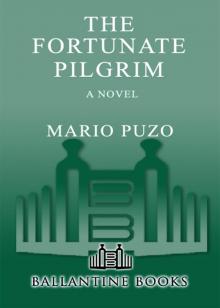 The Fortunate Pilgrim
The Fortunate Pilgrim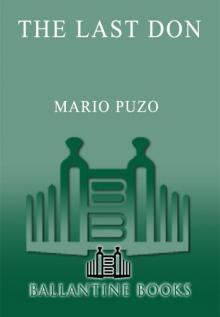 The Last Don
The Last Don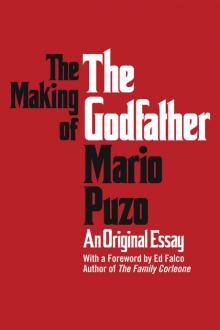 The Making of the Godfather
The Making of the Godfather Fools die
Fools die The Sicilian (v2.0)
The Sicilian (v2.0)